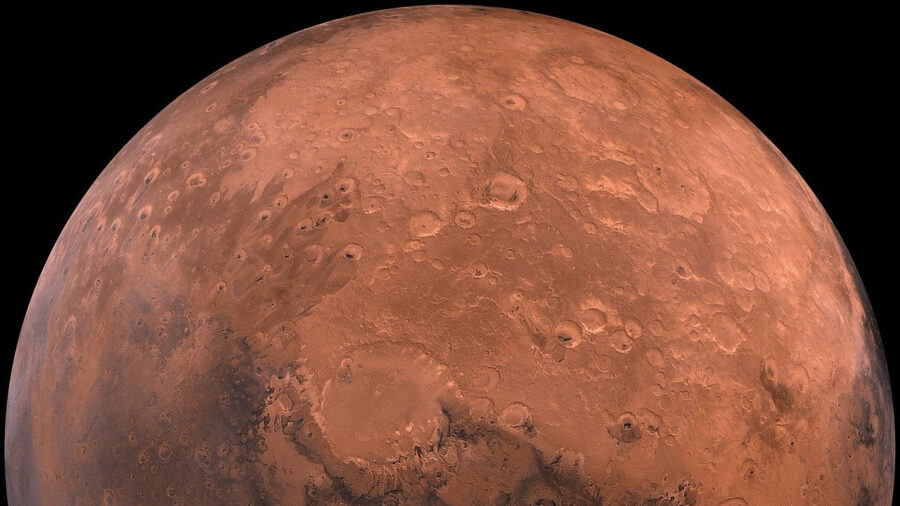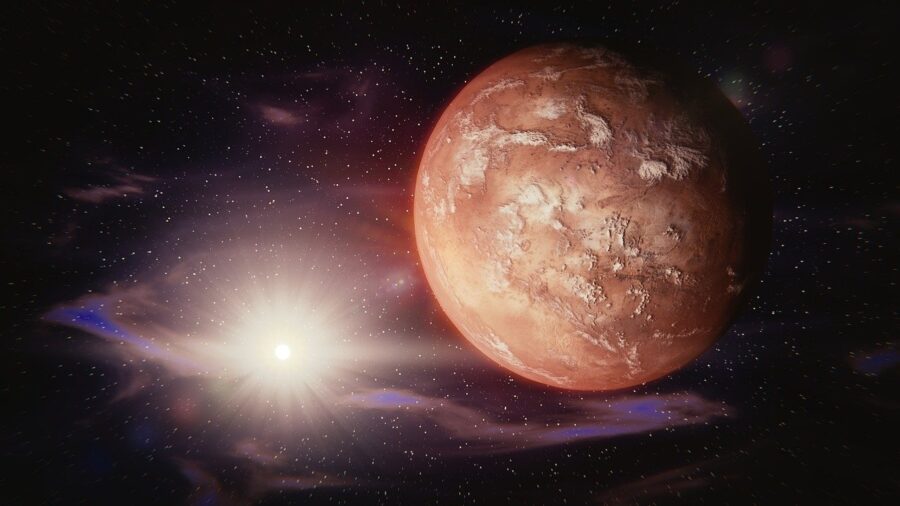Mars Earthquake Largest On Record, Mysterious Source Revealed Inside Planet

On the surface, Mars may seem like a barren wasteland of red dirt with no definite signs of life (at least, not that we’ve yet found, even after years of searching). But way down underneath the desolate shell, Mars may be very much alive, with a hot core still burning eons after the planet’s creation. According to Scientific American, heat escaping this sizzling center caused a 4.7-magnitude Mars earthquake — the strongest quake ever detected away from Earth.
The exact source of the Mars earthquake, known to scientists as S1222a, was not definitively identified, though the most likely cause is tectonic activity as described above. It’s a much more likely theory than previous thoughts that a meteorite impact brought on the marsquake.
A 4.7-magnitude earthquake detected on Mars is the strongest that scientists have ever observed off-planet.
The seismic event appears to have originated about 20 kilometers below the Martian surface, stemming from faults and folds within the planet’s crust as it contracts and cools. This conclusion was drawn from the absence of a surface impact crater associated with the Mars earthquake, which is typically a telltale sign of an impact event. The specific source of this tectonic activity, however, remains a mystery.
In a study recently published in Geophysical Research Letters, a team of researchers led by Benjamin Fernando of the University of Oxford revealed their findings that challenge the initial theory that a meteorite impact might have triggered the Mars earthquake. Through a meticulous analysis of imagery from numerous spacecraft orbiting Mars, including missions from the United States, Europe, India, the United Arab Emirates, and China, the team scoured a vast region around InSight’s landing site, searching for any evidence of a new impact crater. However, their exhaustive examination yielded no such results.

The ground on Mars is marked by numerous cracks and fissures, which support the theory that the Mars earthquake was tectonic in nature since when these components slide past each other, it initiates seismic activity or “quakes.”
A Mars earthquake tells scientists that the planet’s core is still active despite the lifeless surface.
InSight’s principal investigator, Bruce Banerdt, explains, “If they slide past each other, that’s called a fault, and the motion on a fault causes a quake.” This motion can give rise to wrinkle ridges on the surface, but no such ridge on Mars had previously been associated with any of InSight’s recorded quakes, making the specific origins of S1222a particularly enigmatic. This is compounded by the fact that, apart from its significant magnitude, the quake exhibited no distinctive characteristics.
While this seismic discovery of Mars earthquakes challenges our preconceptions of the red planet as a dormant and lifeless globe, it also highlights the significance of space exploration in reshaping our ever-changing understanding of the cosmos.
Unlike Earth, tectonic quakes are not a common occurrence on Mars. If the Mars earthquake resulted from tectonic activity, it suggests that Mars isn’t just a dead red rock floating around in space. It means Mars is still active beneath its lifeless exterior.
The recent theory has opened a Pandora’s box of questions about the planet’s history and the potential for life beyond Earth. Did the cessation of large-scale geological activity on Mars coincide with the extinction of life on the planet? It’s a crucial question that researchers are keen to explore, and the discovery of the source of the S1222a Mars earthquake may be a pivotal piece in unraveling this cosmic mystery.
While this seismic discovery of Mars earthquakes challenges our preconceptions of the red planet as a dormant and lifeless globe, it also highlights the significance of space exploration in reshaping our ever-changing understanding of the cosmos. As Mars reveals its enigmatic nature, the dream of finding life (past or present) on other rocky worlds seems to grow closer every day.












